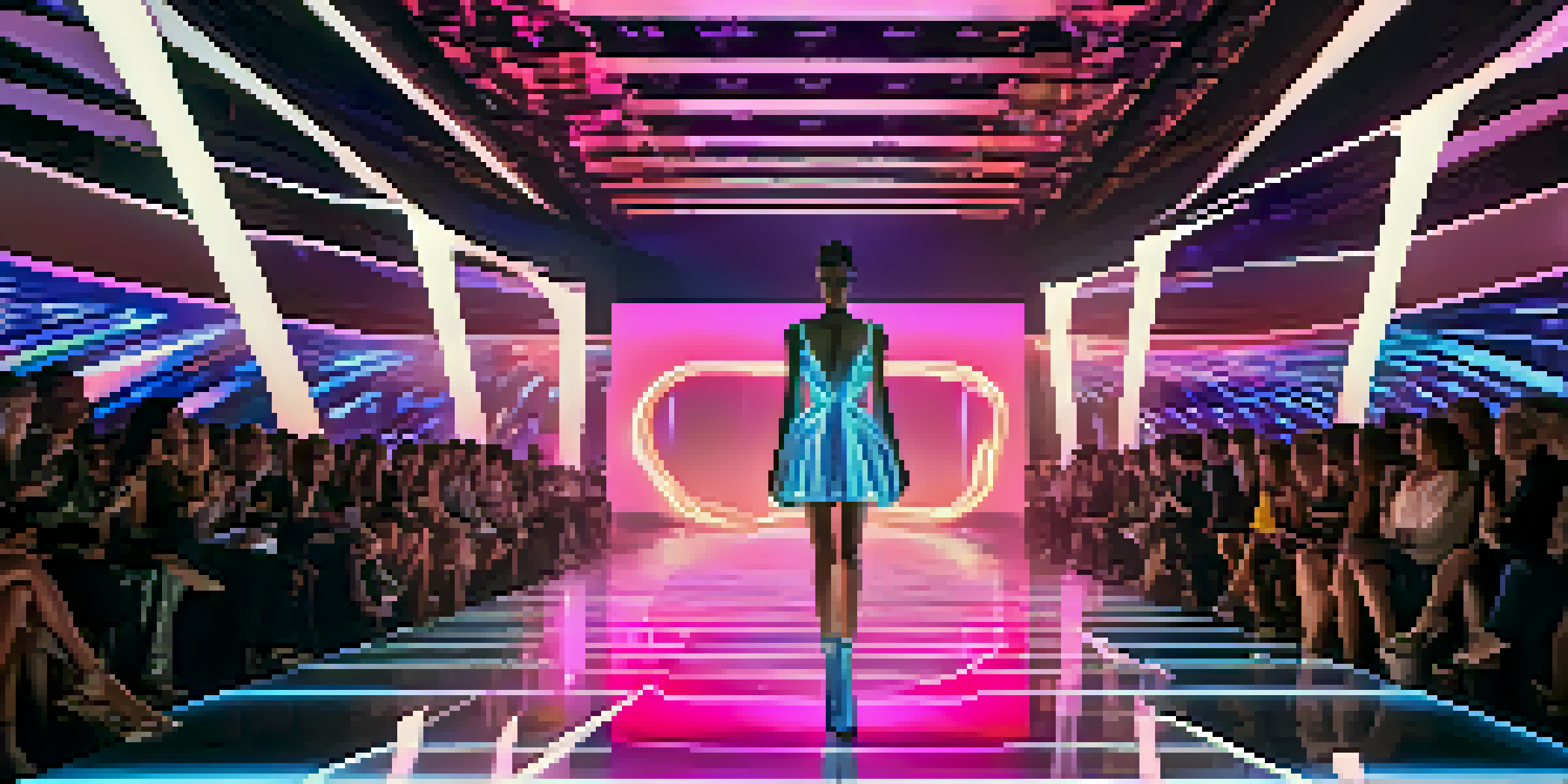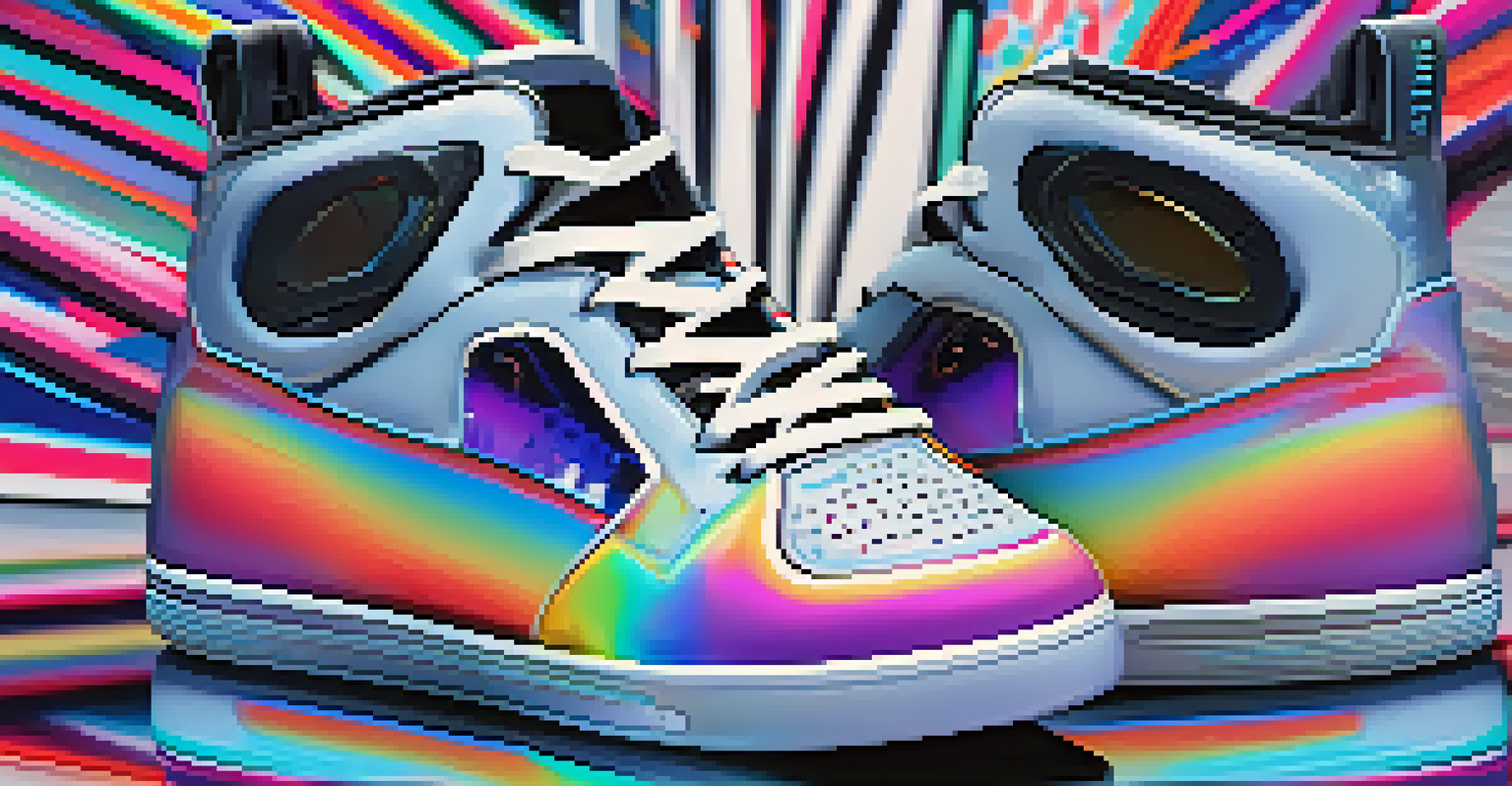Exploring the Rise of NFTs in the Fashion Industry Today

Understanding NFTs and Their Impact on Fashion
NFTs, or non-fungible tokens, are unique digital assets stored on a blockchain. Unlike cryptocurrencies, which are interchangeable, NFTs represent ownership of specific items, making them particularly appealing in the fashion sector. This technology allows designers, brands, and consumers to engage with fashion in innovative ways, creating a digital identity for physical pieces.
Fashion is about dreaming and making other people dream. NFTs provide a new canvas for that expression in the digital age.
For instance, when a designer releases a limited-edition virtual dress as an NFT, it can be purchased, sold, or traded like any physical item. This shift not only offers new revenue streams for designers but also adds a layer of exclusivity that appeals to fashion enthusiasts. As a result, NFTs are becoming a bridge between digital art and physical fashion.
Moreover, the rise of virtual fashion shows and digital clothing highlights how NFTs can transform traditional marketing strategies. Brands can showcase their collections in virtual spaces, reaching global audiences without geographical limitations. This evolution encourages a more sustainable approach, reducing the environmental impact of fashion shows and physical garment production.
Major Brands Embracing NFTs: Leading the Way
Several high-profile fashion brands have already ventured into the NFT space, setting the trend for others to follow. Luxury brands like Gucci and Prada have experimented with digital collectibles, showcasing their commitment to innovation. By launching exclusive NFT collections, these brands are not just selling products but also creating experiences that resonate with tech-savvy consumers.

For example, in 2021, Dolce & Gabbana auctioned a collection of NFTs that included both digital artwork and physical garments. This fusion of digital and tangible fashion highlights how brands can appeal to both traditional buyers and the new generation of digital collectors. Such initiatives reinforce the idea that NFTs can enhance brand storytelling and consumer engagement.
NFTs Transform Fashion Ownership
NFTs provide a unique way for designers and consumers to engage with fashion, creating digital identities for physical pieces.
As these major players pave the way, smaller brands are also finding their niche in the NFT market. This democratization allows diverse voices in fashion to showcase their creativity while reaching audiences that share their values. The ripple effect of these actions is fostering a vibrant community of digital fashion enthusiasts.
Consumer Perspectives: The Allure of Digital Fashion
Consumers are increasingly drawn to NFTs for various reasons, including the thrill of owning unique digital assets. For many, purchasing an NFT from their favorite brand feels more personal and exclusive than traditional shopping. This emotional connection can create a sense of belonging within a community of like-minded individuals who appreciate the intersection of fashion and technology.
The future of fashion is digital, and NFTs are a key part of that transformation, allowing us to redefine ownership and creativity.
Additionally, the concept of digital fashion allows consumers to express their identity in virtual spaces, such as social media or gaming platforms. Owning virtual clothing lets individuals showcase their style even in digital environments, highlighting the importance of self-expression in both physical and digital realms. This trend is particularly appealing to younger generations who spend significant time online.
Moreover, NFTs enable consumers to invest in fashion pieces that may appreciate over time, similar to traditional art collecting. As the market for digital assets continues to grow, savvy consumers view NFT fashion as a potential investment opportunity. This blend of personal enjoyment and financial incentive is a compelling reason for many to explore the world of digital fashion.
Challenges Facing NFTs in the Fashion Industry
Despite the excitement surrounding NFTs, there are notable challenges that the fashion industry must navigate. One major concern is the environmental impact of blockchain technology, as many NFTs require significant energy consumption. Brands are increasingly aware of their carbon footprints and are seeking ways to mitigate these impacts, such as using eco-friendly blockchains.
Additionally, there is a learning curve for both brands and consumers unfamiliar with NFTs. The complexities of purchasing, selling, and trading digital assets can deter potential participants. To address this, brands must educate their audiences about the benefits and mechanics of NFTs, making the process more accessible and user-friendly.
Brands Leverage NFTs for Innovation
Major fashion brands like Gucci and Prada are embracing NFTs to enhance consumer experiences and connect with tech-savvy audiences.
Furthermore, issues of copyright and ownership are also prevalent in the NFT space. Ensuring that creators receive fair compensation for their work is essential, yet there have been instances of unauthorized copying and resale of digital art. As the industry matures, establishing clear guidelines and protections for digital creators will be vital to foster trust and encourage innovation.
The Intersection of Fashion and Gaming: A Growing Trend
The gaming industry presents a unique opportunity for fashion brands to explore NFTs, as players often seek customization options for their avatars. Virtual fashion items, such as clothing and accessories for characters, can be sold as NFTs, merging two industries that are rapidly evolving. This cross-pollination allows brands to tap into new audiences who are already engaged in the digital realm.
A prime example is the collaboration between luxury brands and popular gaming platforms, where users can dress their avatars in high-end fashion. This not only boosts brand visibility but also creates a new revenue stream through digital fashion sales. As gaming continues to rise in popularity, fashion labels are recognizing the potential for deeper engagement with consumers.
Moreover, the rise of virtual reality (VR) and augmented reality (AR) technologies enhances the experience of wearing digital fashion. Consumers can visualize how items look on their avatars or even in real life through AR applications on their smartphones. This immersive experience can transform how we shop and engage with fashion, making NFTs an integral part of future trends.
Sustainability and NFTs: A New Approach to Fashion
Sustainability is a significant topic in the fashion industry, and NFTs offer a fresh perspective on this issue. By creating digital versions of clothing and accessories, brands can reduce waste associated with physical production. This approach aligns with the growing demand for eco-friendly practices and resonates with consumers who prioritize sustainability in their purchasing decisions.
Additionally, NFTs can promote a circular economy by allowing consumers to resell or trade their digital fashion items. This encourages the idea of reusing and recycling within the digital space, which can have a positive impact on the overall fashion ecosystem. Brands that prioritize sustainability through NFTs can attract a conscious consumer base that values ethical practices.
Sustainability Through Digital Fashion
NFTs promote sustainability by reducing waste and encouraging a circular economy in the fashion industry.
As more fashion labels explore sustainable practices, the integration of NFTs into their strategies can serve as a powerful marketing tool. By showcasing their commitment to the environment, brands can build trust and loyalty among consumers. Ultimately, NFTs may play a crucial role in redefining the future of sustainable fashion.
The Future of NFTs in Fashion: Trends to Watch
As we look ahead, the future of NFTs in the fashion industry appears promising, with several trends set to shape its evolution. One significant trend is the increasing collaboration between fashion brands and digital artists, leading to unique and innovative NFT collections. This partnership allows for an exciting fusion of creativity, bringing fresh ideas to the forefront of digital fashion.
Moreover, the integration of artificial intelligence (AI) in the design process opens new avenues for customization and personalization. AI-generated designs can be minted as NFTs, offering consumers a truly one-of-a-kind digital fashion piece that reflects their individuality. This trend emphasizes the importance of personal expression in a rapidly changing fashion landscape.

Finally, as technology continues to advance, we may see the emergence of new platforms and marketplaces dedicated solely to NFT fashion. These specialized spaces can facilitate easier access for consumers and creators alike, making it simpler to explore and engage with digital fashion. The ongoing evolution of NFTs in fashion promises to create exciting opportunities for all stakeholders involved.